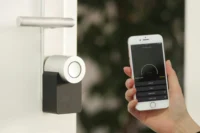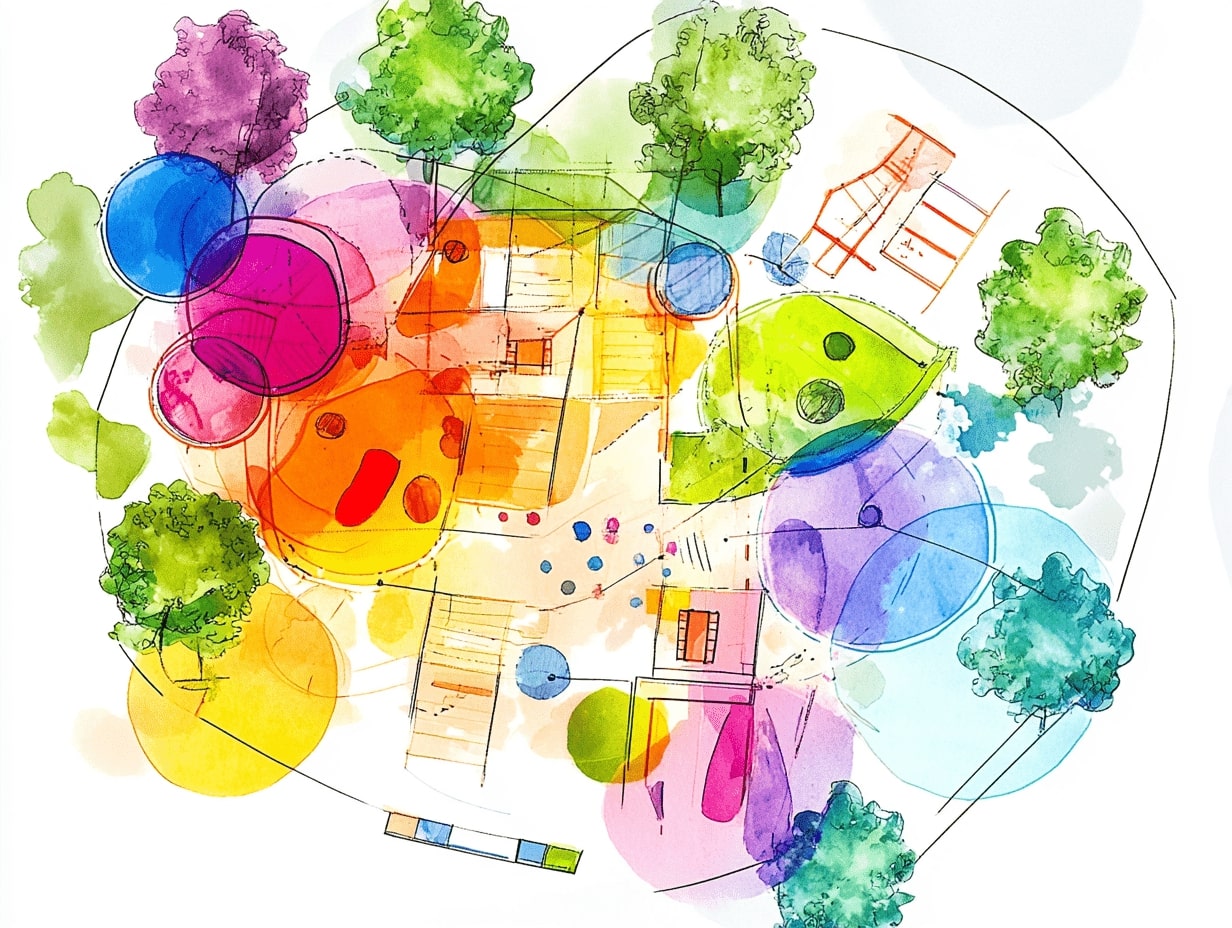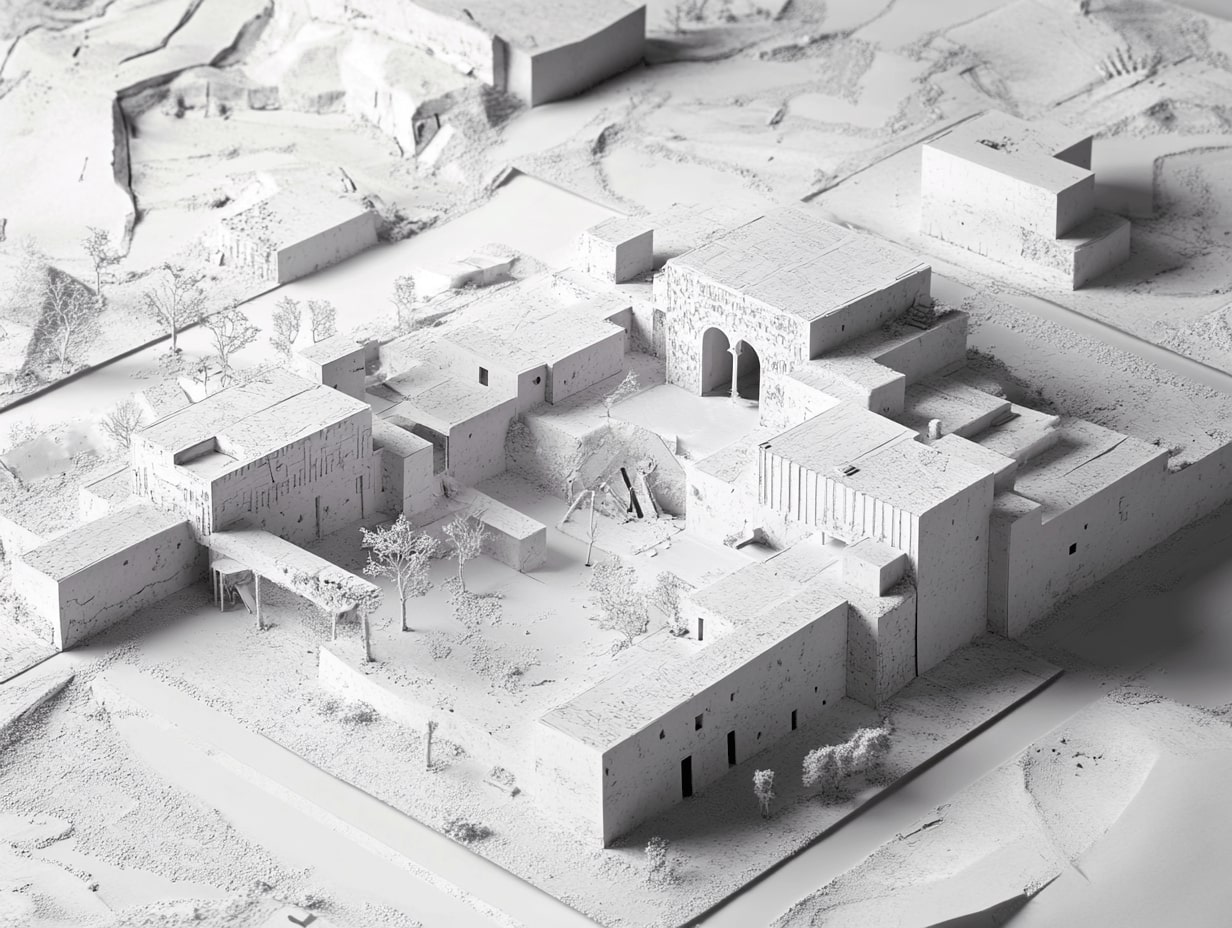- Home
- Articles
- Architectural Portfolio
- Architectral Presentation
- Inspirational Stories
- Architecture News
- Visualization
- BIM Industry
- Facade Design
- Parametric Design
- Career
- Landscape Architecture
- Construction
- Artificial Intelligence
- Sketching
- Design Softwares
- Diagrams
- Writing
- Architectural Tips
- Sustainability
- Courses
- Concept
- Technology
- History & Heritage
- Future of Architecture
- Guides & How-To
- Art & Culture
- Projects
- Interior Design
- Competitions
- Jobs
- Store
- Tools
- More
- Home
- Articles
- Architectural Portfolio
- Architectral Presentation
- Inspirational Stories
- Architecture News
- Visualization
- BIM Industry
- Facade Design
- Parametric Design
- Career
- Landscape Architecture
- Construction
- Artificial Intelligence
- Sketching
- Design Softwares
- Diagrams
- Writing
- Architectural Tips
- Sustainability
- Courses
- Concept
- Technology
- History & Heritage
- Future of Architecture
- Guides & How-To
- Art & Culture
- Projects
- Interior Design
- Competitions
- Jobs
- Store
- Tools
- More
Understanding Architectural Axonometric Diagrams: A Guide

In the realm of architectural design, the axonometric diagram stands out as a pivotal tool, offering a unique perspective that bridges the gap between two-dimensional plans and the three-dimensional reality of structures. These diagrams, by employing techniques such as dimetric and trimetric projections, allow us to see a building from a vantage point where dimensions and spatial relationships are clarified, despite the complexity of the design. This method not only enhances our understanding of architectural concepts but also simplifies communication among professionals and clients alike.
We dive into the intricacies of axonometric diagrams, exploring how they’re crafted to represent objects and spaces accurately. Unlike traditional perspectives that mimic human vision, axonometric diagrams maintain scale and proportion across all axes, providing a more technical and precise visualization of architectural designs. Whether it’s through the balanced angles of dimetric projections or the varied scales of trimetric views, these diagrams serve as essential tools in the architect’s arsenal, ensuring that every angle and dimension of a proposed structure is thoroughly examined and understood.

Table of Contents
ToggleUnderstanding Axonometric Diagrams in Architecture
The Basics of Axonometric Projection
Axonometric projection serves as a cornerstone in architectural visualization, transforming how we perceive and articulate space. Unlike perspective drawings that mimic human vision by converging lines at a vanishing point, axonometric diagrams retain parallel lines and scale, offering an undistorted representation of the subject. This technique allows viewers to understand complex structures from a vantage point that provides clarity and precision. Axonometric projection encompasses a process where a three-dimensional object is depicted on a two-dimensional plane, ensuring that each axis remains scale-true. The result is a drawing that accurately communicates spatial dimensions and relationships, making it an invaluable tool for architects and designers. It bridges the conceptual gap between flat architectural plans and the three-dimensional reality they represent, thereby facilitating a comprehensive understanding of designed spaces.
Types of Axonometric Diagrams
Within the broad category of axonometric diagrams, three primary types stand out: isometric, dimetric, and trimetric projections. Each offers a distinct way of representing three-dimensional objects on two-dimensional surfaces.
- Isometric Projections: In an isometric diagram, all three axes of the object are angled equally with the plane of projection, typically at 30 degrees. This equality results in a uniform foreshortening of scales, providing a balanced view of the object that is particularly effective for conveying structural and spatial relationships in architectural designs.
- Dimetric Projections: Dimetric diagrams take a slight deviation by displaying two of the three axes with the same degree of foreshortening while the third axis is represented differently. This approach enhances the depiction of depth, making it easier to illustrate and understand more complex volumes and shapes in architectural elements.
- Trimetric Projections: Offering the most detailed view, trimetric diagrams depict all three axes with different degrees of foreshortening. Although this method can present a more intricate visualization of architectural designs, it is less commonly used due to its complexity in construction and interpretation. Trimetric projections excel in showcasing specific spatial dynamics and intricate details that other diagrams might not capture as effectively.
Understanding these types of axonometric diagrams empowers us to choose the most appropriate method for presenting architectural ideas. Each type brings its unique benefits to the table, allowing architects and designers to convey depth, scale, and spatial relationships accurately. Through meticulous selection and application of these diagrams, we can enhance the clarity of architectural communications, ensuring that every dimension and detail of the design is comprehended accurately by clients, contractors, and team members alike.

The Role of Axonometric Diagrams in Design
Axonometric diagrams, including isometric, dimetric, and trimetric projections, play a pivotal role in the world of architectural design. By bringing together two-dimensional plans and three-dimensional structures, these diagrams serve as a bridge that enhances understanding, communication, and collaboration in architectural projects. Let’s delve into how axonometric diagrams contribute to visualizing complex structures, communicating design intent, and facilitating multidisciplinary collaboration.
Visualizing Complex Structures
Axonometric diagrams provide architects and designers with a powerful tool for visualizing complex structures. Unlike traditional two-dimensional floor plans or elevations, axonometric projections maintain scale and proportion across all axes, allowing for a more accurate representation of spatial dimensions and relationships. This accuracy is crucial when dealing with intricate designs, as it ensures that all stakeholders can correctly perceive the scope and details of the project. Whether it’s an isometric projection that simplifies the perception by giving equal emphasis to all three dimensions or a trimetric projection that offers a more nuanced view by varying the scale and angles, axonometric diagrams enable a clear and precise visualization of architectural concepts.
Communicating Design Intent
One of the primary benefits of axonometric diagrams is their ability to communicate design intent effectively. By presenting a detailed and proportionally accurate depiction of a design, these diagrams allow architects to convey their ideas clearly and unambiguously. This clarity is essential not only for clients, who may not have a technical background, but also for all team members involved in the project. Axonometric projections make it easier to understand the spatial relationships between different elements of a design, helping stakeholders to appreciate the aesthetic and functional aspects of a project fully. Moreover, these diagrams can help identify potential design issues early in the process, enabling timely adjustments that can save time and resources.
Facilitating Multidisciplinary Collaboration
In today’s architectural practice, projects often require the collaboration of professionals from various disciplines, including architects, engineers, and construction managers. Axonometric diagrams facilitate this multidisciplinary collaboration by providing a common visual language that all parties can understand and use to discuss the project. The precision and clarity of axonometric projections enable team members to analyze design proposals accurately, coordinate their efforts, and make informed decisions. This collaborative approach, supported by effective visual communication tools, leads to more efficient project workflows, reduced errors, and a higher quality of the final structure.
The role of axonometric diagrams in design extends far beyond mere representation. These diagrams are indispensable tools that aid in visualizing complex structures, communicating design intent, and facilitating multidisciplinary collaboration. By leveraging the unique characteristics of isometric, dimetric, and trimetric projections, architects and designers can ensure their visions are understood, appreciated, and brought to life with precision and efficacy.

The Artistic Side of Axonometric Diagrams
In architecture, axonometric diagrams go beyond functional layouts and technical details. They embody an artistic side that enhances the visualization of projects. Through the following sections, we’ll delve into how these diagrams impact the aesthetic appeal of architectural representations and play a pivotal role in presentations.
Enhancing Aesthetic Appeal
Axonometric diagrams possess the unique ability to transform standard architectural drawings into visually appealing representations. By employing various artistic techniques such as shading, coloring, and texturing, these diagrams bring a vibrant life to designs. This not only aids architects and designers in conveying complex spatial relationships in a more digestible format but also captivates the viewer’s attention through striking visuals.
For instance, using different opacities and colors to highlight materials and layers creates depth in the presentation, portraying the envisioned environment in a more tangible and engaging manner. A soft pencil grey with an opacity of 94% can provide a delicate shading effect, subtly distinguishing different elements without overwhelming the viewer. Similarly, incorporating filled strokes with varying opacities and colors, like a light blue at 33% opacity, can simulate realistic shadows, adding a layer of depth and realism to the diagrams.
Axonometrics in Architectural Presentations
In architectural presentations, axonometric diagrams serve as a powerful tool to convey the essence of a design. They bridge the gap between purely technical drawings and the final built environment, offering a glimpse into the future of the project. By integrating people, landscape objects, and even theoretical yet impossible geometries, architects can invoke a sense of scale, space, and dynamics in their designs.
This inclusion of human figures and natural elements, easily sourced from object libraries or created using tools like the “Filled Stroke” for drop shadows, introduces a narrative to the axonometric view. It allows the audience to imagine the interaction between the space and its potential users. Furthermore, the strategic use of transparency in PNG objects embeds a layer of sophistication into these presentations, making them readily accessible and understandable to clients and stakeholders without an architectural background.
Moreover, the artistic rendering of axonometric diagrams sparks curiosity and invites viewers to explore the details of the design. Whether through the exploration of optical illusions like those found in op art, or the meticulous crafting of impossible objects that challenge perceptions, these diagrams exceed their functional purpose. They become a canvas where the laws of physics and conventional viewpoints are reimagined, engaging viewers in a dialogue that extends beyond the physical blueprint into the realm of artistic expression.
The artistic side of axonometric diagrams plays a crucial role in enhancing the aesthetic appeal and effectiveness of architectural presentations. Through creative techniques and thoughtful integration of artistic elements, these diagrams transcend their traditional boundaries, offering not just a detailed view of the proposed architecture but also an engaging visual experience.

Creating Axonometric Diagrams
Creating axonometric diagrams is a process that can significantly elevate architectural design, offering a bridge between the simplicity of 2D blueprints and the compelling depth of 3D models. These diagrams not only enhance the presentation of architectural ideas but also provide a comprehensive understanding of spatial relationships and building structures. In this section, we will explore the tools and software best suited for creating axonometric diagrams and provide actionable tips to ensure your diagrams are both effective and aesthetically appealing.
Tools and Software for Axonometric Drawings
When it comes to generating axonometric diagrams, the choice of tools and software plays a pivotal role in achieving desired outcomes. Our experience and the evolution of architectural visualization have inclined us toward recommending digital tools for this task, given their efficiency and versatility.
Firstly, 3D modeling software like Rhino has become indispensable in our toolkit. Rhino particularly stands out for its Make2D command, which effortlessly translates complex 3D models into accurate 2D axonometric projections. This feature not only simplifies the process but also allows for customization in terms of view, object properties, and naming conventions, ensuring that the output aligns with our specific requirements.
Furthermore, image editing software enhances these basic line drawings by adding layers of textures, shadows, and colors, thus bringing the axonometric drawings to life. Photoshop, with its extensive toolkit for image manipulation, stands as a powerful ally in refining axonometric diagrams.
Lastly, the digital age brings with it an abundance of online resources and communities. Platforms like YouTube serve as a treasure trove of tutorials and guides, catering to a wide range of skill levels and creative aspirations. These resources are instrumental in not only learning the basics but also exploring advanced techniques to take axonometric diagrams to the next level.
Tips for Creating Effective Axonometric Diagrams
Creating effective axonometric diagrams extends beyond mere technical execution. It involves a deliberate approach to composition, detail, and storytelling. Here are several tips we’ve found invaluable through our projects:
- Prioritize Clarity and Purpose: Before diving into the drawing, it’s crucial to define the diagram’s purpose. Whether it’s to highlight spatial relationships, showcase a building’s form, or present a design concept, the intent will guide your choice of projection, detail level, and elements to include.
- Select the Right Projection: Isometric, dimetric, and trimetric projections each offer a unique view of the structure, varying in the angles and distortions they present. Choose the one that best conveys the spatial qualities you wish to emphasize.
- Incorporate Textures and Shadows: Use textures and shadows judiciously to add depth and realism to your diagrams. These elements, when used effectively, can greatly enhance the three-dimensionality and legibility of the axonometric view
Axonometric Diagrams: From Practical to Conceptual
Axonometric diagrams have transitioned remarkably from practical design tools to conceptual frameworks in architectural design. These diagrams are not just representations but pivotal tools that articulate the spatial dynamics of structures, enhance understanding, and facilitate communication within the design and construction industries. As we expand on this topic, we’ll explore how iconic axonometric diagrams have shaped architectural presentation and speculate on future trends in axonometric representation.
Case Studies: Iconic Axonometric Diagrams in Architecture
Examining iconic axonometric diagrams provides us with invaluable insights into their practical and conceptual significance in architecture. For instance, the works of architects like Le Corbusier and I.M. Pei stand out for their use of axonometric diagrams to convey complex architectural ideas in a digestible format. Le Corbusier’s Villa Savoye diagram breaks down the five points of his new architectural aesthetic, offering a clear, three-dimensional understanding of his design principles without the need for physical presence. Similarly, I.M. Pei’s axonometric diagrams for the Louvre Pyramid meticulously illustrate the integration of contemporary design within a historical context, showcasing the power of these diagrams in bridging time and style.
These case studies illuminate how axonometric diagrams serve as comprehensive tools for architects, enabling the visualization of conceptual throughlines in designs and facilitating the externalization of intricate spatial relationships. The precision and clarity inherent in axonometric projections allow both architects and viewers to grasp the essence of designs, making them indispensable in the architectural process.
Future Trends in Axonometric Representation
The future of axonometric representation in architecture looks promising, integrating advancements in technology with evolving design philosophies. With the advent of software like Rhino, architects now have at their disposal powerful tools that automate and refine the creation of axonometric diagrams, enhancing both their accuracy and aesthetic appeal. Furthermore, virtual reality (VR) and augmented reality (AR) technologies are set to extend the capabilities of traditional axonometric diagrams by offering immersive experiences that enable users to explore architectural spaces in three dimensions before they are constructed.
Moreover, we’re witnessing a conceptual shift as more architects embrace axonometric diagrams not only as tools for representation but as part of the narrative process of design. This trend speaks to the growing recognition of narrative and storytelling in architecture, where axonometric diagrams contribute to the storytelling aspect of projects, providing deeper insights into the conceptual underpinnings of designs.
Axonometric diagrams have evolved significantly, from practical drafting tools to complex representations that offer both conceptual insight and a narrative framework in architectural design. As technology continues to advance, we anticipate even more innovative uses of axonometric diagrams, further cementing their value and utility in the architectural domain.
- architectural diagram
- Architectural Diagram Concept
- Architectural Diagram Design
- Architectural Diagram Types
- Architectural Diagrams
- architectural diagrams guide
- Architectural Programmatic Diagrams
- Axonometric Diagram
- Axonometric Diagrams
- Circulation Diagram
- How to Create Architectural Diagram
- Programmatic Diagrams
Submit your architectural projects
Follow these steps for submission your project. Submission FormLatest Posts
Top 6 Software Architecture Diagram Secret Tricks Every CS Student Should Know in 2025-26
Read this article to learn simple and effective ways to create software...
Architecture Site Analysis Site Visit: A Guide to Better Design and Sustainability
Discover the importance of architecture site analysis and site visits in creating...
Unlocking Creativity: The Power of Architecture Bubble Diagrams in Design Process
Discover the vital role of bubble diagrams in architecture, enhancing clarity and...
Essential Tips for Evaluating Your Architectural Site Analysis for Successful Projects
Discover the key to successful architectural design with a thorough evaluation of...












Leave a comment